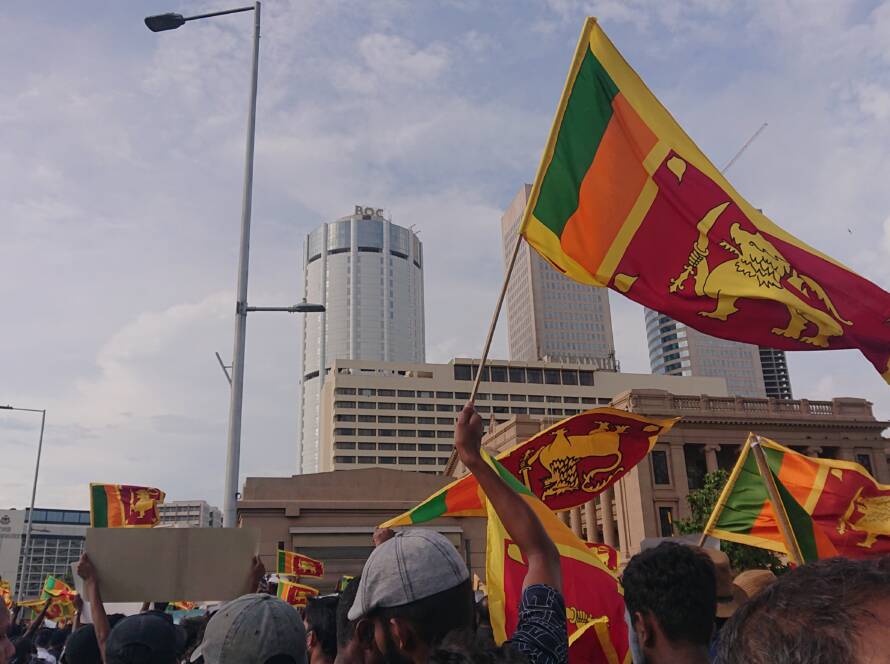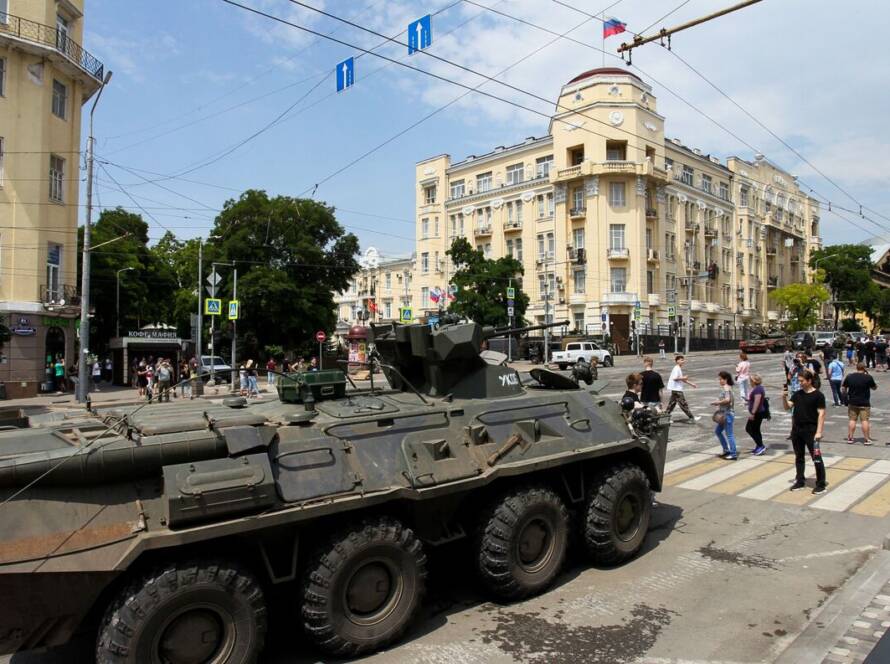All South Asian countries, not just Sri Lanka, are facing economic problems such as a shortage of essentials commodities, rising inflation, fall in the value of the local currency against the US dollar, and social and political unrest triggered by economic issues. Only the intensity varies.
The roots of these domestic problems lie both in the domestic sphere and the international sphere. International relations could either help solve these politico-economic problems or themselves become reasons for tension. South Asian nation are heavily dependent on foreign funds.
Sri Lanka
The problems Sri Lanka is currently facing are rooted in domestic mismanagement over many years. Bad tax policies, poor tax collection, unbridled borrowing in dollars to fund non-income generating and fancy projects, needless lockdowns with severe restrictions during the pandemic, unjustifiable tax concessions, reckless recruitment to an already bloated public service, and last but not the least, the mindless fiat suddenly and totally banning chemical fertilizers, combined to empty the Treasury and create an unprecedented forex shortage.
Ultimately, this led to Sri Lanka’s defaulting on international loan repayments and going to India and the rest of the world with a begging bowl. A once proudly independent Sri Lanka is today at the mercy of other countries, fearing domination by regional and global powers or the institutions under their control.
International relations hold the key to Sri Lanka’s survival given its dependence on external donors for even basic items of mass consumption like food, fuel and medicines. The government is seeking a US$ 3 billion bailout package from the IMF and is waiting with bated breath for the package. It appears resigned to accepting the IMF’s onerous conditions.
With the principal bilateral lender, China, playing hard to get for reasons best known to it, and the West only throwing crumbs at it, Colombo has been leaning heavily on India despite opposition from Lankan nationalists. India has so far ignored the opposition and responded magnanimously out of a combination of humanitarian impulse as well as a geopolitical interest in stemming China’s influence in Sri Lanka. Estimates of Indian humanitarian aid vary from US$ 3.5 billion to US$ 5.5 billion.
But India is actually at the end of its tether, given its own economic problems. Be that as it may, it is not in a position to shut the door to Sri Lanka. It cannot allow Sri Lanka to sink because an unstable and impoverished Sri Lanka will have unpleasant repercussions for India. There is a possibility of a flow of refugees into India as it happened in the 1980s due to ethnic strife in the island. That eventually led to a costly Indian military misadventure.
According to economists Umesh Moramudali and Thilina Panduwawala, China has been one of the largest lenders to Sri Lanka accounting for 19.9% of the island’s Public and Publicly Guaranteed Debt (PPG), which includes commercial lending to government and State-owned enterprises. Chinese PPG debt is 20% of the debt service.
The Foreign Currency Term Financing Facility (FCTFF) extended by China enabled the government to use the money without conditions and that helped it muddle through the financial crunch in 2020 and 2021, Moramudali and Panduwawala say. But in 2022, the chickens came home to roost. In April 2022, debt repayment became impossible and government had to default to the extent of US$ 26 billion.
Angry with Colombo for its dalliance with India, the IMF and the West, and for spurning its advice on how to tackle the crisis, China refused to restructure repayment of the debt owed to it. Instead, it asked Sri Lanka to accept re-financing of the Chinese debt, be financially prudent, open the country for Chinese FDI and sign an FTA with it. But Sri Lanka is unable to meet these conditions and is hoping that China will soon relent and revise its rigid conditions.
India
Although India’s GDP is growing by 8.7% after a slide during the pandemic, it continues to be burdened by poverty which is being managed by expensive subsidies and handouts. India has banned the export of wheat fearing a shortage.
There is a fuel shortage which is being met by importing from Russia defying sanctions clamped by the US, India’s strategic partner. While the economy is growing, youth unemployment is also burgeoning. This is partly because the industrial sector has been allowed to languish over the years.
Against this background, India’s ability to help Sri Lanka is limited. New Delhi is now dragging its feet on giving Sri Lanka an additional US$ 500 million for fuel imports, though it is learnt that four more shipments of fuel will arrive in July. New Delhi is eagerly waiting for the IMF’s bailout for Sri Lanka, as that will encourage the West to come to Sri Lanka’s aid and relieve India of a part of the burden.
Meanwhile, India has been using the humanitarian aid as a handle to wrest some investment projects from Sri Lanka to make up for the 10-year draught of projects caused by Colombo’s pro-China tilt. India is wanting projects in the renewable energy, infrastructure and connectivity sectors. But these have incurred opposition from nationalists who see foreign investments as an abridgement of national sovereignty.
The opposition Samagi Jana Balawegaya (SJB) leader Lakshman Kiriella has warned of an agitation if the Trincomalee harbor is given to India for development. There has been opposition to two renewable energy projects given to India’s Adani group for a US$ 500 million investment.
Pakistan
Pakistan too is in dire straits, in desperate need of an IMF bailout. The need is for a revival of the stalled US$ 6 billion IMF facility and the immediate release of US$ 900 million as forex reserves have fallen below US$ 10 billion, enough only for 45 days of imports. But getting an IMF loan comes with strict conditions, which Pakistan would find hard to meet. It has to reduce the budget deficit, improve tax collection, phase out electricity subsidies and reduce forex market intervention by the federal bank.
The current economic crisis in Pakistan is primarily attributed to its extensive spending on non-developmental and economically unviable projects like the China-funded China-Pakistan Economic Corridor (CPEC). China had lent Pakistan US$ 64 billion for CPEC, which is not yielding results yet. However, China recently lent US$ 2.3 billion to help Pakistan tide over the forex crisis.
After the exit of anti-American Imran Khan from the Premiership of Pakistan, the new pro-US government led by Shahbaz Sharif is likely to get a sympathetic hearing in Washington, the help of which is necessary to swing a good deal with the IMF.
Bangladesh
Bangladesh, described as a South Asian success story, is also facing macroeconomic challenges marked by high inflation, an escalated current account deficit, negative growth in remittances, stress on the Taka-US dollar exchange rate, and strains on the foreign exchange reserves, says Semin Raihan in The Daily Star.
As in India, job creation is a problem despite GDP growth. Hoarding and market manipulation by unscrupulous businessmen and a surge in imports have resulted in a large current account deficit despite strong export growth, Raihan says.
However, in terms of foreign debt, Bangladesh is not under pressure. Nevertheless, government is aware that it must be prudent since many of the megaprojects are foreign-debt-financed and foreign debt has risen. There are also concerns over the lack of proper feasibility studies and the cost and time overruns of foreign-funded projects.
In 2015, China had surpassed India as Bangladesh’s largest trading partner. China is heavily involved in infrastructure projects which are worth more than US$ 10 billion. Bangladesh is set to receive an investment worth US$ 40 billion from China. China supplies raw materials to Bangladesh’s main industry – garments.
The US is particularly perturbed over China’s ingress in Bangladesh and is trying to inveigle it into becoming part of the anti-China maritime security “Indo-Pacific” alliance. But Dhaka has told Washington that it will consider joining only if there is a clear economic aspect to the Indo-Pacific project which is now blatantly military. On the contrary, India is happy with Bangladesh for supporting its inter-connectivity projects.
Nepal
Unlike Bangladesh, Nepal has problems with the US, China as well as India. By virtue of its historical, religious and cultural ties with Nepal, India has had a stake in Nepalese politics and acts to safeguard them.
India uses the fact that Nepal is a landlocked country with easy access to the outside world only through the Nepal-India border. But this is not always liked in Nepal, despite India’s substantial developmental assistance. Encouraged by China, Nepal is trying to find outlets via the northern border with China. But China angered the Nepalese by closing the border during the pandemic.
There are Sino-Nepalese connectivity and power generation projects. China has also offered duty-free treatment for 98% of the goods imported by China. Apart from Pakistan, Nepal is the only other South Asian country which is part the China’s Belt and Road Initiative (BRI).
But the Chinese tendency to poke their nose into Nepalese politics by propping up the communist parties is disliked by many Nepalese, as well as India and the US. The US arm-twisted Nepal into joining its Millennium Challenge Corporation (MCC) developmental compact. The US$ 500 million MCC was seen by Nepal as an abridgment of their sovereignty though it was a grant. It was ratified very reluctantly.
But Nepal refused to accept the US State Partnership Program (SPP), which came under the US Defense Department. Nepal, like Bangladesh, is averse to defense pacts which might elicit the wrath of neighboring China.
Maldives
China had the pride of place in the Maldives when the pro-Chinese Abdulla Yamen was President of that country. The China-Maldives Friendship Bridge linking Male with Huluhumale, the Velana international airport modernization, and water purification and housing projects marked China’s presence during Yameen’s Presidency.
But India got the better of China when the pro-West and pro-Indian Ibrahim Solih came to power in 2018, riding an anti-corruption and pro-democracy wave. Solih accused Yameen and China of putting the Maldives in a debt trap through expensive projects.
With Solih’s nod, India has been doing a number of projects worth millions of dollars. India has given a line of credit for the Greater Male Connectivity Project connecting Villingili, Gulhifalhu and Thilafushi islands, involving the construction of a 6.7 kilometer bridge and causeway network.
India has given loans for nine projects through the High Impact Community Development Projects (HICDP) scheme. It will fund fish processing and bottled water plants and the establishment of tourism zones. Prior to this, New Delhi had offered US$ 400 million through an extended currency swap arrangement to meet a liquidity crisis.
India is also reported to have granted the Maldives US$ 1.4 billion in budgetary aid to negate the adverse economic impact of the COVID-19 pandemic. Yameen’s plan for a Maldives-China FTA is now in the limbo. But Yameen has not taken these developments lying down. He has been organizing an “India Out” campaign, though with little or no success.
P. K. Balachandran is a freelance journalist based in Colombo writing on South Asian affairs for various news websites and dailies for a number of years. He has reported from Colombo and Chennai for Hindustan Times, New Indian Express and Economist. He has a weekly column in Daily Mirror and Ceylon Today in Sri Lanka.
Factum is an Asia-focused think tank on International Relations, Tech Cooperation and Strategic Communications based in Sri Lanka accessible via www.factum.lk


